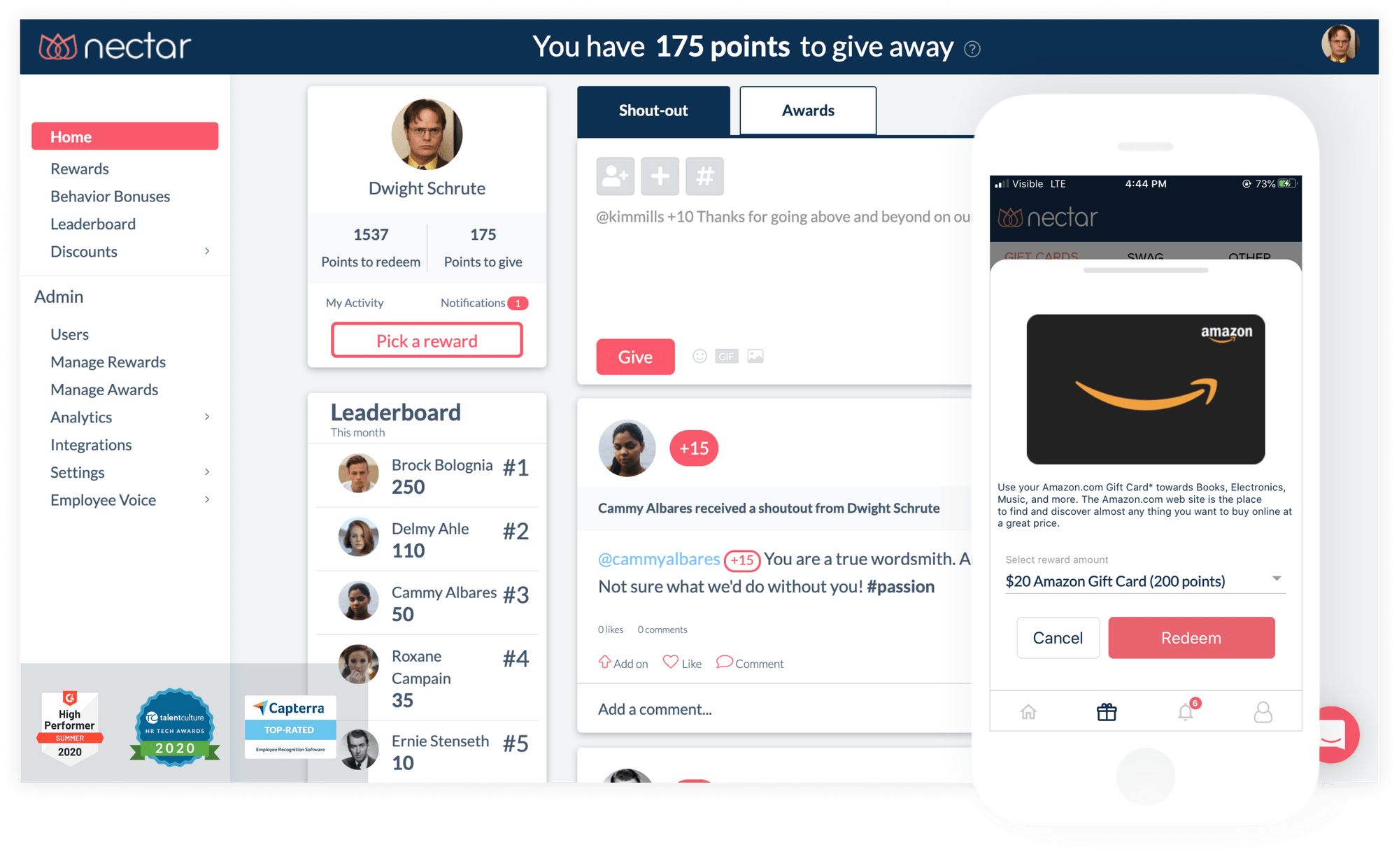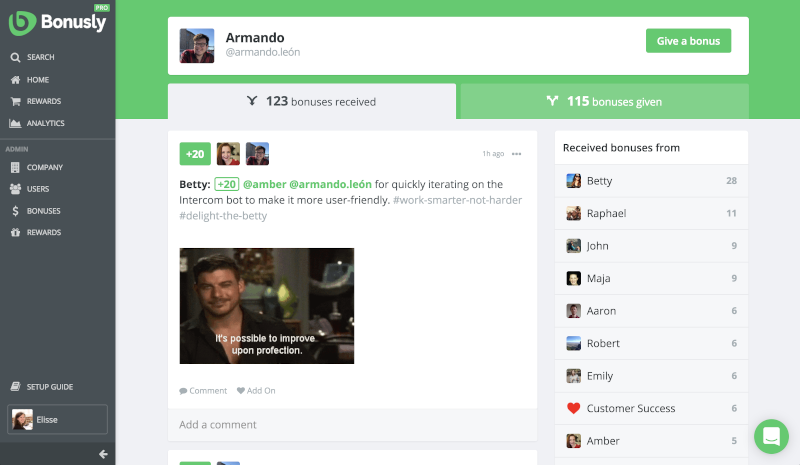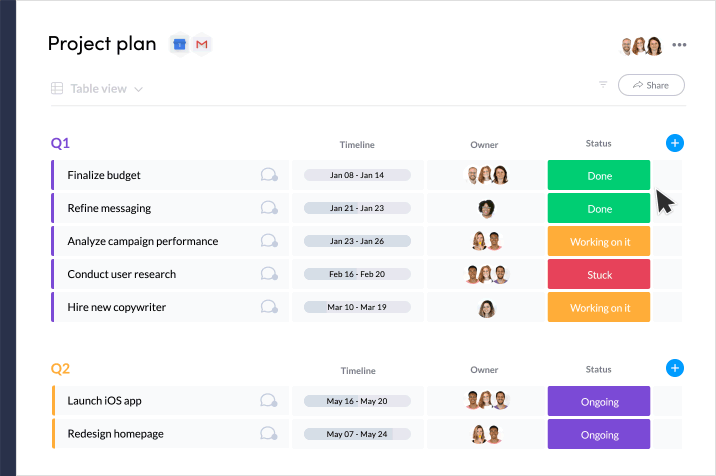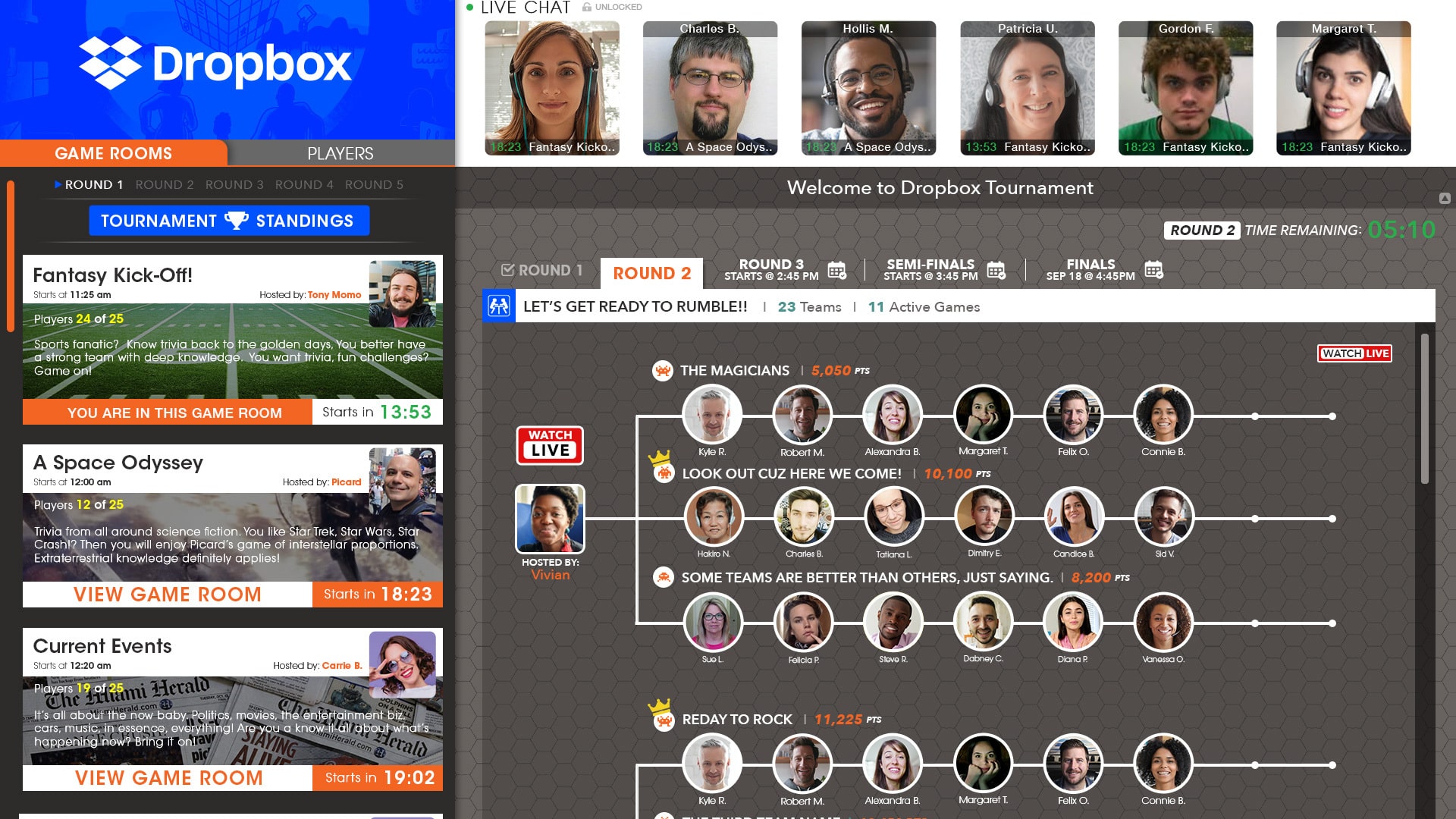
Remote work culture, like other cultures, can be something you only truly understand if you get it.
Do you get it?
Do you want to know if you get it…or maybe figure out how to get it?
We designed this definitive guide to help you become a virtual work culture guru.
Page Contents (Click To Jump)
What Is Remote Work Culture?
Before we answer that question, let’s define culture by itself.
Just some of Merriam-Webster’s definition options include:
- “The customary beliefs, social forms, and material traits of a racial, religious, or social group.”
- “The set of shared attitudes, values, goals, and practices that characterizes an institution or organization.”
- “The set of values, conventions, or social practices associated with a particular field, activity, or societal characteristic.”
You can feel fully connected to geek culture, popular culture, or maybe the Italian culture of your grandparents without spending time with every adherent on a regular basis.
Remote work culture is an unconditional feeling of connection co-workers experience when they’re bonded by similar priorities, interests, and attitudes.
This feeling of connection survives when people don’t see each other on a regular basis. Strong work cultures give people an unshakable sense of belonging.
Note: Your company’s remote work culture could be the same as your traditional work culture, but it might also look radically different. Pinpoint the difference by subtracting any element of your culture tied to physical space. What do you have left?
If your employees love to gather for impromptu dance parties or wear matching outfits one Friday a month, then you’ll need to pinpoint the underlying appeal and recreate it virtually.
Tools & Ideas To Help You Build A Strong Remote Work Culture
1) Nectar
Nectar makes it easier than ever to foster collaboration and connection across remote teams through recognition and rewards.
How it strengthens your remote work culture:
One of the challenges of remote work is building camaraderie and connection across individuals and teams – something that’s significantly easier when everyone works from the same office. Nectar fills that void by creating a fun, collaborative space where people can celebrate great everyday work that often goes unnoticed.
How it could save you time:
Giving out gift cards or company swag as reward options is especially burdensome for organizations with a remote workforce. You and your HR team shouldn’t feel like you’re running an E-commerce store. Not only does Nectar offer digital gift cards that are sent instantly, the platform also provides on-demand swag management. No more bulk swag orders, storage closets full of old t-shirts or having to ship swag to people all over the country. Instead, the swag is made as it’s ordered and shipped directly to the employee’s doorstep without you having to lift a finger. Talk about a time save!
2) Bonusly
Bonusly is a recognition platform that makes it easy to virtually reward and celebrate peers and employees.
How it strengthens your remote work culture:
It makes online recognition fast and fun, therefore it’s more likely to happen on all levels. This makes everyone feel seen, appreciated and connected.
How it could save you time:
You don’t have to spend time developing recognition plans, figuring out all the details of execution, or relaying the details to employees. Everything happens organically right within the platform.
3) Slack
Slack brings casual instant messaging, collaborative channels, and tons of other communication tools into your office.
How it strengthens your remote work culture:
Slack enables remote employees to communicate with one another instantly. You don’t need to know their phone number or email address to shoot them a message or even just to say “hi.”
How it could save you time:
A casual communication tool like Slack could significantly reduce the time teams spending writing emails and attending meetings that could be transitioned into Slack channel formats.
4) monday.com
monday.com provides a virtual environment remote workers can use to engage, collaborate, and communicate as though they were in a physical office.
How it strengthens your remote work culture:
monday.com makes it easy for remote employees to visualize, organize, and complete their work. It makes working remotely more streamlined and enjoyable, something you need before you can hope to scale a remote culture.
How it could save you time:
It takes the burden of facilitating remote employee communication away from one team. monday.com provides the tools and the virtual space, and employees need no help or instruction before diving right in.
5) Quizbreaker

Use Quizbreaker to build and distribute quizzes that are perfect for virtual team building and virtual team bonding.
How it strengthens your remote work culture:
Each quiz isn’t just fun for everyone to take. As people answer questions, they’re also learning about co-workers, gaining the kind of knowledge and understanding that helps remote culture thrive.
How it could save you time:
You might not have to spend a lot of time in “stealth mode” every time someone’s birthday comes up. If you participate in these quizzes, you might already know what kind of cake everyone prefers and what kind of presents they’re likely to enjoy.
6) Go Game
The event planning experts at the Go Game will set up virtual game shows, happy hours, and conferences that help your team members bond from any location.
How it strengthens your remote work culture:
Remote teams that have fun together stay together. The Go Game helps everyone on the team have fun and also makes sure no single team has to shoulder the burden of planning events everyone will love.
How it could save you time:
Enjoy tons of fun events without spending more than a second on the planning or logistics side.
7) Assembly
Assembly makes employee recognition easy by providing a consolidated solution to support all things recognition, rewards, and corporate perks.
How it strengthens your remote work culture
Assembly gives remote employees somewhere to go when they need a morale boost or are looking to feel a little more connected to the rest of the team.
The streamlined program makes it near-effortless to give a meaningful “thank you”, and the public social feed lets other team members see all the great things their peers have accomplished. When you’re trying to support remote culture and keep the team engaged, having this kind of company-wide insight into team wins is key.
How it could save you time
To start, Assembly saves you time by streamlining the process of delivering recognition and rewards via an easy-to-use platform. It also comes with a few extra features that can save you even more time.
- Pre-negotiated discounts and curated rewards
- Automated work anniversaries and birthdays
- Useful analytics based on your unique program data
Having one platform like Assembly that supports all of these things simultaneously adds up to a pretty significant amount of time saved. With all those manual processes off their plate, your HR team will be free to put their time into other culture-building activities that support your remote workforce.
8) GooseChase
Create exceptional and fun experiences for your remote team, wherever they are in the world! GooseChase is a scavenger hunt vendor that brings teams together to compete in scavenger hunt-like games to make a lasting impact on company culture and retention.
How it strengthens your remote work culture:
GooseChase helps unite your team by giving employees a space to show off their personalities, capabilities, and creativity. The friendly competition will keep your colleagues engaged and build culture and camaraderie. Curate games with missions centered around learning company values, to onboard them onto new processes, or to simply bond and have fun.
How it could save you time:
The intuitive platform makes it easy to create, reuse, share, and co-manage games – save even more time by pulling ideas from GooseChase’s bank of pre-created missions. It’s also simple to download player submissions (photos, videos, etc.) for you to share internally. With the reporting dashboard you can measure employee engagement and review individual submissions for compliance, for example, reviewing videos of the team practicing sales calls against your prescribed scripts.
How Do You Improve The Culture Of A Virtual Team?

Follow these steps to build a strong remote work culture. We’ve used Maslow’s hierarchy of needs, a psychological theory that tiers human requirements and desires, to order the steps. This structure will help you fulfill essential remote work needs before striving for actualization.
Basic Needs: Meeting Functional Requirements
Step 1 – Make sure employees have everything they need to work remotely
Some essentials include:
- Reliable internet connection
- Dedicated space for working
- Phone
- Computer
- Printer
- Router
- Office supplies
- Desk
- Desk chair
If you find many employees lack these essentials, try carving out a budget for remote setup. If you don’t have the budget, then help employees create a realistic plan for checking off all their essentials.
Find more tips on getting employees set up in our remote onboarding checklist.
Step 2 – Establish remote work policies, expectations, and guidelines
This documentation should address some common questions employees have about remote work.
- Scheduling. Do you expect employees to work fixed hours or will you be flexible? Will you encourage or discourage employees from checking messages outside of “regular business hours?”
- Communication and collaboration. What are the communication channels of record? How often should employees plan virtual meetings with their teams?
- Vacation and time off. May employees travel while working remotely as long as they meet key deadlines? Does the time-off request process work the same way?
Step 3 – Communicate the policies, expectations, and guidelines and solicit feedback and questions
- Distribute your documentation across your company’s favorite communication channels.
- Post everything on your company intranet or web content management system so employees can reference key points again and again.
- Create a survey that employees can use to provide feedback on your policies and ask questions.
Emotional Needs: Fulfilling Desires for Esteem and Belonging
 Step 4 – Create a remote culture statement
Step 4 – Create a remote culture statement
Take a look at your current culture statement. Chances are, it already works perfectly as a remote culture statement. Just check it for terminology people might associate with physical spaces, such as “happy hour,” “game rooms,” or “office pets.”
If you don’t already have a culture statement, create one by…
- Making a list of values and interests your employees share
- Explaining how your company helps nurture those values
Step 5 – Build an events calendar
Create a calendar (for the year or at least a quarter) filled with all-hands meetings, town-halls, virtual events, and other gatherings. This gives employees working from home a firm sense of time and connection to other employees.
Include any in-person gatherings on the planning books. Knowing when and where they can see their colleagues again helps remote workers power through feelings of loneliness and isolation.
Step 6 – Start a mentorship program or buddy system
Regular contact with even just one trusted friend or mentor can do wonders for a remote employee’s sense of belonging.
Remote work models mean you can even pair employees from different offices in different locations. This significantly expands the reach of your company’s network of close relationships, giving everyone a chance to understand different teams and maybe even share different skills.
Aspirational Goals: Strive for Creativity and Fulfillment
 Step 7 – Establish unique traditions
Step 7 – Establish unique traditions
Anyone who came from a family, school, or group of friends with a one-of-a-kind tradition knows how even small acts can create a sense of unity. (Once you’ve participated in a relay race while balancing a teacup on your head, you’re part of the group forever.)
Adding beloved traditions to an already strong culture can make employees feel like fulfilled members of a tight-knit community.
SnackNation employees have moved their beloved “Crush-It” call to a remote format that actually enhances certain aspects of the event. As employees share their “crush” (a colleague they want to recognize for outstanding work), everyone else can buzz and bond via online chat without interrupting their peers.
Step 8 – Integrate remote cultural principles into other areas of your business
Sit down with different teams to discuss ways to get your remote culture more deeply ingrained in your business. For example, you could…
- Talk to your human resources or recruiting team about adding interview questions that screen prospective employees for culture fit.
- Ask managers to rate employees’ embodiment of cultural values during annual reviews.
- Send communications teams small reminders and culture quotes to work into emails and newsletters.
Step 9 – Help employees establish remote growth and development plans
Whether you work at a company that had a work-from-home policy from the beginning or one that switched gears in the days of physical distancing, many of your employees may still be envisioning their career growth in traditional office terms.
Some aspects of career growth might even be symbolized by features of a physical office. (Moving from a row of desks into a swanky corner office, for example.)
Help, or have managers help, employees map out their desired career trajectory in a remote work environment. What steps do they need to take to advance? What skills should they work on?
To be truly fulfilled, employees must be able to envision where they’re headed and also like what they see.
Why Is Remote Work Culture Important?

Most people intuitively understand how shared values might lead to specific benefits. Those same people might also wonder how to articulate the specific benefits. Here are just a few.
Remote work culture counteracts remote isolation.
Buffer’s State of Remote Work Survey established “loneliness” as the second biggest struggle with working remotely. A strong remote work culture unites workers around a shared sense of purpose. This produces feelings of camaraderie and also leads to real actions—such as casual check-ins—that counteract isolation.
Remote work culture primes your company for future success.
Partial or complete remote work could be the new normal. A recent Gartner survey found that 74% of responding chief financial officers will be moving some employees to fully remote status.
Companies who build cultures to withstand the challenges inherent to remote work will skip the growing pains of shifting work models, maintaining productivity as trends change.
Remote work culture helps build long-term relationships.
Consider bolstering your remote work culture a win, even if your company returns to fully onsite work. Strong remote work culture is a strong culture—period. Strengthening team bonds to work remotely will also benefit onsite work by deepening relationships, building trust, and enhancing communication.
People Also Ask These Questions About Remote Work Culture
Q: How do I build a strong culture with a remote team?
- A: Build a strong remote culture by pinpointing the values and interests your employees share and also the things your employees love about working at your company. Once you’ve established those factors, you can figure out how your remote work culture can nurture those shared interests, values, and loves. Find step-by-step tips for building a strong remote culture here.
Q: Can employees that work together remotely still have culture?
- A: Employees that work together remotely can still have culture in the same way that people living in different areas can share culture. You can feel fully connected to the culture of your Italian ancestors without ever meeting them. Remote work culture operates the same way, providing a feeling of connection that has nothing to do with space but instead relies on similar priorities, interests, and attitudes.
Q: Does a focus on remote culture help to improve business outcomes?
- A: A focus on remote culture can help improve business outcomes because it helps improve relationships and communication at your company. To get anything done, teams have to communicate frequently and listen often. Remote work culture may also democratize innovation, giving more introverted voices online communication channels that help them freely express ideas.
Q: Are there free ways to build remote team culture?
- A: There are plenty of free ways to build a remote team culture. Companies can find new ways to leverage existing communication channels or even find new ways to use existing technologies to collaborate. Learn more about building a remote team culture.
Q: Why do virtual employees feel isolated?
- A: Virtual employees feel isolated because they no longer have the same cues that make them feel seen and heard. The absence of even small things—such as smiles, high-fives, and the buzz of office chatter—can leave some workers feeling disconnected. Overcome this barrier to working from home by building a strong remote work culture.
Q: What are some ways a company can foster culture in a virtual setting?
- A: A company can foster culture in a virtual setting by establishing guidelines for communication frequency and quality. Teams can host virtual team-building events and find creative ways to adapt to standing meetings and gatherings for online formats. Use this guide to start building a strong remote work culture.
Q: How can a company scale a remote work culture?
- A: A company can scale remote work culture by evaluating and optimizing current efforts and then developing new positions and teams to constantly improve and develop remote work programs. Building a strong baseline remote work culture should always be the first step in this process.
Q: What kinds of people skills help a remote work culture thrive?
- A: The skills that help a remote work culture thrive might be different from those that help a traditional work culture thrive. Leaders in your remote culture will need to discover and leverage technology to conduct work and also build relationships remotely from the ground up.
Q: How can I choose tools for building a strong remote work culture?
- A: Choose tools for building a strong remote culture by evaluating features and estimating your return on investment. Does the tool replace or consolidate existing services? What percentage of employees do you expect will adopt the tool? Does the tool potentially streamline work and save you time or add responsibilities to someone’s plate? Start your evaluation with the remote work culture in this post.
Q: How can you improve your remote work environment with limited budget?
- A: There are many ways to help your remote work environment despite little to no budget for it. Finding little ideas to recognize employees like calling them out for good work or mentioning them in an email or Slack message can have a huge impact while costing little. For low cost ways to make your environment more positive, check out our guide to remote work culture.
Q: How do I factor returning to work into my remote work culture plans?
- A: Any steps you take to build a remote work culture by enhancing relationships, trust, and communication will also benefit onsite work. Companies should avoid leaning too heavily on past models and instead re-envision what the future of work could look like. Even if a percentage of the workplace works remotely in the long-term, a strong remote culture can help keep a distributed office together.














I work with a remote team with co-workers from around the world. We might be changing our tool to organize individual tasks as our workload increases. I am torn between monday.com or Slack. Which do you think is better between the two? Thanks!